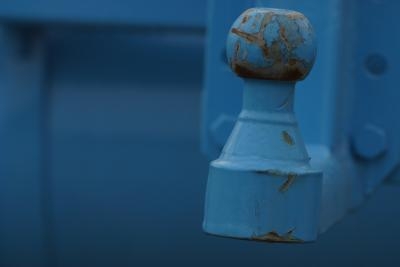
Before you tow something behind your vehicle, make sure that you raise the receiver hitch to the correct height. Choosing the proper receiver hitch height is important when towing a trailer behind your vehicle to ensure that you don't cause any damage to the vehicle or to the item that you are towing. There are many different reasons you may need to raise a receiver hitch, including trailer weight, load design or vehicle modifications that you may have had done to your vehicle. Raising a receiver hitch is easy to do with a small amount of preparation.
Measure the height of the trailer hitch from the coupler to the ground. The coupler is the piece of the trailer that sticks out, and will eventually connect the trailer to your vehicle. Make sure that your trailer is parked on level ground before you begin measuring.
Measure the height of your vehicle's receiver hitch from the ground to the top of the receiver opening. This measurement will serve as a general guideline to help you determine how high you need to raise your receiver hitch. Keep in mind that the load weight of the trailer will cause the vehicle to lose some height, and you may need to compensate for this when raising your hitch by adding some additional height.
Determine the difference in height between the receiver and the coupler. If there is no height difference, you will not need to raise or drop your hitch. If there is a difference between the two heights, you will need to know whether you need to add or drop height to the receiver to make the two pieces level with each other.
Insert your trailer ball hitch into the receiver opening on your vehicle. If your trailer is heavy, you may need assistance doing this in order to prevent injury. To add a rise, place the hitch into the receiver so that the hitch is angled up above the receiver. To add a drop, simply flip the hitch over so that the hitch is angled down below the receiver.
Align the hitch pin holes on your receiver and the hitch. Place the hitch pin through the receiver and hitch and secure. Place the cotter pin on the hitch pin in order to secure it in place. The cotter pin serves as an additional safety measure to ensure that the vehicle and trailer to not become detached accidentally.
Ensure that the trailer is secured to the vehicle correctly prior to moving your vehicle. If your trailer has a stabilizer, be sure to raise it before you move your vehicle to avoid damage.